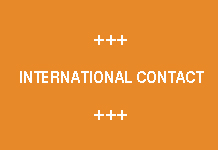The researchers successfully used the novel inkjet-printed biosensors to quickly and easily detect two test neurotoxins both visually with the naked eye and by using a digital camera and image analysis software. The paper-based sensors provided reproducible results after storage at 4° C for two months, showing the system is suitable for storage and use in the field.
By showing that inkjet deposition is a simple, portable and cost-effective method of adhering biochemical reagents to paper, the McMaster University researchers have brought the concept of “bioactive paper” a significant step closer to commercialization. Their research is described in the July 1 issue of Analytical Chemistry, in a paper entitled, “Development of a Bioactive Paper Sensor for Detection of Neurotoxins Using Piezoelectric Inkjet Printing of Sol−Gel-Derived Bioinks”
Bioactive paper is any low-cost and easy-to-use paper product laced with biologically active chemicals that provides a rapid, portable, disposable and inexpensive way to detect – and in some cases deactivate – toxins like E. coli bacteria and salmonella, or pathogens such as SARS or influenza. Applications for bioactive paper range from food packaging and hospital masks to paper strips for detecting and purifying unsafe drinking water or checking for banned pesticides in crop produce.
The ability to rapidly detect toxic substances with tools that are simple, portable, disposable and inexpensive is also extremely useful in monitoring environmental and food-based toxins in remote settings such as less industrialized countries where simple bioassays are essential for the first stages of detecting disease settings and where the time and expense of using sophisticated instrumentation would be prohibitive.
The new inkjet method relied on a Fujifilm DMP-2800 to print a toxin-detecting enzyme-doped bioink sandwiched between two layers of biocompatible silica nanoparticles onto readily available filter paper substrates to create colorimetric sensor strips. The sensor strips can be used like a home pregnancy test to identify the presence and concentration of certain toxins by changing color when the enzyme is exposed to a specific toxin.
“This research represents the first report published on the utilization of piezoelectric inkjet printing in the development of sol-gel-based paper biosensors,” said John Brennan, Ph.D., the lead researcher and a faculty member in the Department of Chemistry at McMaster University. “Our research shows that inkjet printing provides a new platform for fabricating bioactive paper strips that can detect a range of biohazards that affect animals and humans. Inkjet printing is ideal for this application because the system is simple, rapid, scalable, compatible with paper substrates and amenable to pattern formation,” said Dr. Brennan.
The Fujifilm Dimatix DMP-2800 system incorporates microelectromechanical system (MEMS)-based Dimatix Materials Cartridge (DMC) printheads that were filled with the desired volumes of bioinks. The precision jetting and cartridge design of the DMP-2800 allowed the researchers to jet droplets in sizes of 1 to 10 picoliters using a separate DMC printhead for each of the three different bioinks. The DMP-2800 was equipped with a drop visualization system that allowed observation and capture of drop formation on the printhead nozzles and the trajectory of the drops after ejection.
The cartridge design of the DMP-2800 prevented interaction of the sol-gel-derived bioinks to avoid gelation in the inkjet nozzle prior to deposition on the paper surface, while its precision jetting and droplet imaging capabilities enabled the researchers to adjust and analyze varying applications of the materials deposited in layers as thin as 4 μm – or about 20 times thinner than a human hair.
“Fujifilm Dimatix is glad to participate as an industry partner of the Sentinel Network and to provide technical support to its researchers in using the Dimatix Materials Printer for a purpose that has both practical and pressing application,” said Martin Schoeppler, President and CEO of Fujifilm Dimatix.





